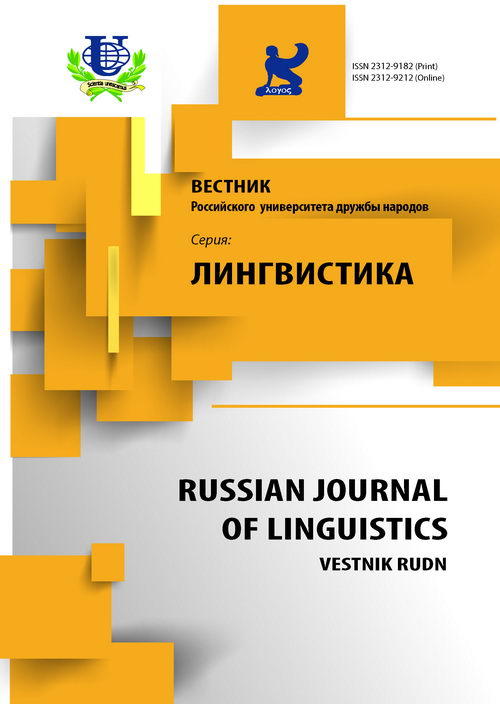Complex sentence in Yakut (its structural and semantic peculiarities)
- Authors: Yefremov NN1
-
Affiliations:
- Research Institute for Humanities and Problemsof the Indigenous Peoples of the North
- Issue: No 1 (2012)
- Pages: 98-104
- Section: Articles
- URL: https://journals.rudn.ru/linguistics/article/view/9518
- ID: 9518
Cite item
Full Text
Abstract
The article considers the main structural and semantic peculiarities of the complex sentences of the Sakha language which are formed, first of all, by a conjunctionless method that is caused by the postpositive-agglutinative type of structure of this language.
About the authors
N N Yefremov
Research Institute for Humanities and Problemsof the Indigenous Peoples of the North
Email: nik.efrem50@mail.ru <mailto:efrem50@mail.ru>
Сибирское отделение РАН; Институт гуманитарных исследованийи проблем малочисленных народов Севера; Research Institute for Humanities and Problemsof the Indigenous Peoples of the North
References
- Убрятова Е.И. Исследования по синтаксису якутского языка. Ч. 2. В двух книгах. - Новосибирск: Наука, 1976.
- Ефремов Н.Н. Полипредикативные конструкции в якутском языке. Система, структура, семантика. - Новосибирск: Изд-во СО РАН, 1998.
- Грамматика современного якутского литературного языка. Ч. 2: Синтаксис. - Новосибирск: Наука, 1995; Ефремов Н.Н. Основные проблемы исследования сложного предложения в якутском языке // Сибирский филологический журнал. - Новосибирск, 2008. - № 3. - C. 160-163.
Supplementary files















